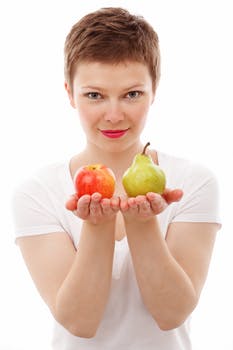Posted: Jul 20, 2018

Particularly women wine drinkers.
When I lived in Northern California, I spent many weekends doing the most Northern California thing possible (aside from practicing nude goat yoga and crafting small-batch, organic, free-range chia kombucha): visiting wineries. Some of my most favorite memories involve downing bottles of delicious, jammy Napa reds. Some of my least favorite memories were the epic hangovers that followed, a factor that led me to switch from the grape to the ganja.
Wine is still prefered over weed by many, but that could be changing. That might not be great news for vino makers, but is a positive step for consumers, particularly women. Women make nearly 60 percent of wine purchases, leading vineyards and producers to market to them with greater intensity and focus, and earning wine the incredibly creepy nickname “mommy juice” in some circles. (Do you say that? Stop.)
Your favorite beach read, the American Journal of Public Health, published a study in June 2015 that “estimated the prevalence of any drinking and binge drinking from 2002 to 2012, and heavy drinking from 2005 to 2012 in every US county.” It uncovered that men’s binge drinking grew 4.9 percent in that time, while women’s binge drinking grew at a much higher rate of 17.5 percent.
This isn’t to say that a single glass of wine is the devil’s sippy-cup and will inevitably lead to wreck and ruin (unless it’s a Pinot spilled onto a white linen shirt). But many of us know at least one person who has slowly progressed from a glass of wine after work on Friday, to a couple of nights a week, to a bottle or more most nights. Even in moderation, a glass of wine contains 100 to 300 calories, which can be an issue for those watching their health. Furthermore, alcohol is dehydrating and can result in drier skin, and the histamines in red wine can result in skin flare-ups for those with rosacea and other inflammatory skin conditions.
Reaching for a wine glass instead of a joint can be attributed to a number of factors—wine is still far more socially acceptable in many circles, especially that elusive unicorn for the cannabis market, so-called soccer moms. Traditional smoking methods are (rightfully) frowned upon when used in close proximity to children, while less invasive consumption methods, such as vape pens and low dose edibles, are not as well known to new users.
In states without a regulated cannabis program, legal and easy access to cannabis products is nearly nonexistent, and education on the comparative health and risk benefits between alcohol and cannabis can be difficult to come by, or rely on outdated prohibitionist-era misinformation.
But as legalized cannabis programs expand across the United States, trends are emerging showing that pot could be a disruptor in alcohol consumption, and wine in particular. New York-based research firm Rabonack released a report in April that showed several reasons why.
Particularly women wine drinkers.
They cited a 2017 survey that asked respondents, “If the federal government legalized marijuana would you... buy and use marijuana?” The number of people who said yes was especially significant among women and older, wealthier consumers, the core demographic groups of the wine market.
Another reason involves regulated cannabis programs passing in states that already have higher-than-average wine consumption rates. Rabonack’s paper goes on: “According to [market analysis company] IWSR, the average, per-capita wine consumption in states with legalized marijuana is 13.4 liters. The average for states without legal adult-use marijuana is 8.2 liters. More than 30 percent of US wine, by volume, is consumed in states that have legalized adult-use marijuana.”
Since the states that introduce legal cannabis will see a dramatic increase in cannabis consumption (aka the “Gee, really?” factor), wine numbers will correspondingly go down. The paper says as “a disproportionate number of the people exposed to legal marijuana are wine drinkers,” cannabis will replace a portion of the wine being consumed.
We’re not talking about the type of wine enthusiast who can lecture you for hours on the subtle notes of a 1964 Rothschild here—but as Rabobank analyst Stephen Rannekleiv told Forbes, the consumers most likely to switch from wine to cannabis “tend to skew to the under-$10 [a bottle] segments. I would guess this is the price segment most likely to see some potential impact from legalization.”
Your “Two-Buck Chuck” wine drinker may soon find themselves skipping the calories and hangover, in favor of puffing on $3 grams. recommended
By Josh Jardine
July 18, 2018
Source: The Stranger.com
Go-Wine's mission is to organize food and beverage information and make it universally accessible and beneficial. These are the benefits of sharing your article in Go-Wine.com